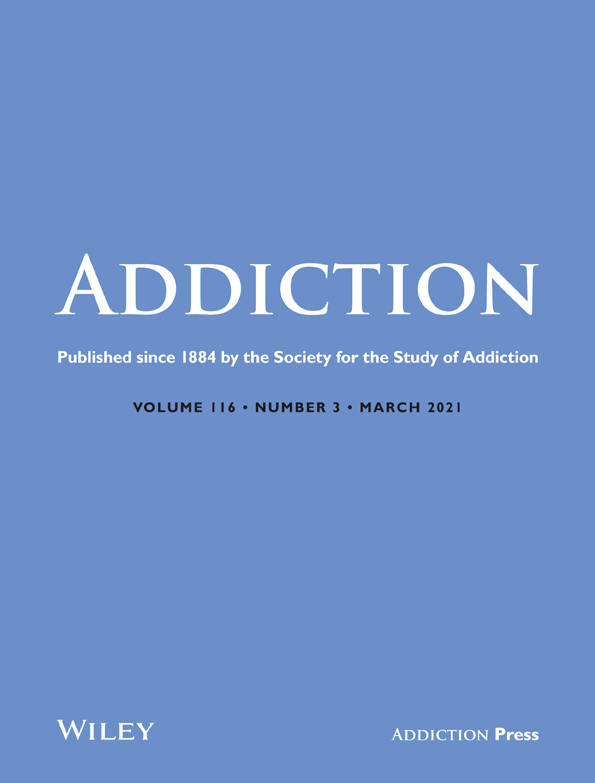Cannabis use disorder trajectories and their prospective predictors in a large population-based sample of young Swiss men
Abstract
Background and Aims
Cannabis use disorder (CUD) is frequent in adolescence and often goes into remission towards adulthood. This study aimed to estimate trajectories of CUD severity (CUDS) in Swiss men aged from 20 to 25 years and to identify prospective predictors of these trajectories.
Design
Latent class growth analysis of self-reported CUDS in a cohort study with three data collection waves.
Setting
A general population sample of young Swiss men.
Participants
A total of 5987 Swiss men assessed longitudinally at the mean ages of 20, 21.5 and 25 years.
Measurements
Latent CUDS in the last 12 months was measured at each wave with the Cannabis Use Disorders Identification Test–Revised (CUDIT-R). Predictors of CUDS trajectories, measured at age 20, were from six domains: factors related to cannabis use, family, peers, other substance use, mental health and personality.
Findings
We distinguished four CUDS trajectories: stable–low (88.2%), decreasing (5.2%), stable–high (2.6%) and increasing (4.0%). Predictors were generally associated with higher odds of membership in the decreasing and stable–high trajectory (versus the stable–low), and to a lesser degree with higher odds of membership in the increasing trajectory. Bivariate predictors of persistent high CUDS (stable–high versus decreasing trajectory) were major depression severity [odds ratio (OR) = 1.19, 95% confidence interval (CI) = 1.01, 1.40], attention deficit hyperactivity disorder severity (OR = 1.25, 95% CI = 1.04, 1.51), antisocial personality disorder severity (OR = 1.18, 95 % CI = 1.04, 1.34), relationship with parents (OR = 0.74, 95% CI = 0.63, 0.88), number of friends with drug problems (OR = 1.33, 95% CI = 1.11, 1.60) and the personality dimensions neuroticism–anxiety (OR = 1.35, 95% CI = 1.11, 1.65) and sociability (OR = 0.78, 95% CI = 0.62, 0.97).
Conclusions
Factors associated with persistent cannabis use disorder in young Swiss men include cannabis use, cannabis use disorder severity, mental health problem severity, relationship with parents (before the age of 18), peers with drug problems and the personality dimensions neuroticism–anxiety and sociability at or before age 20. Effect sizes may be small, and predictors are mainly associated with persistence via higher severity at age 20 years.




